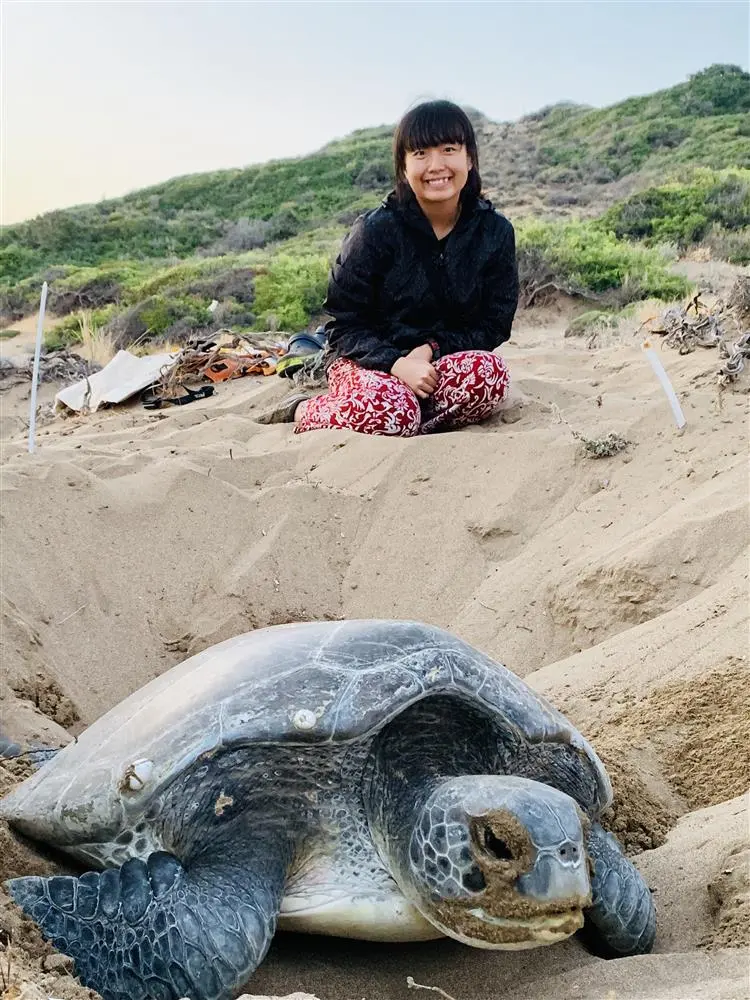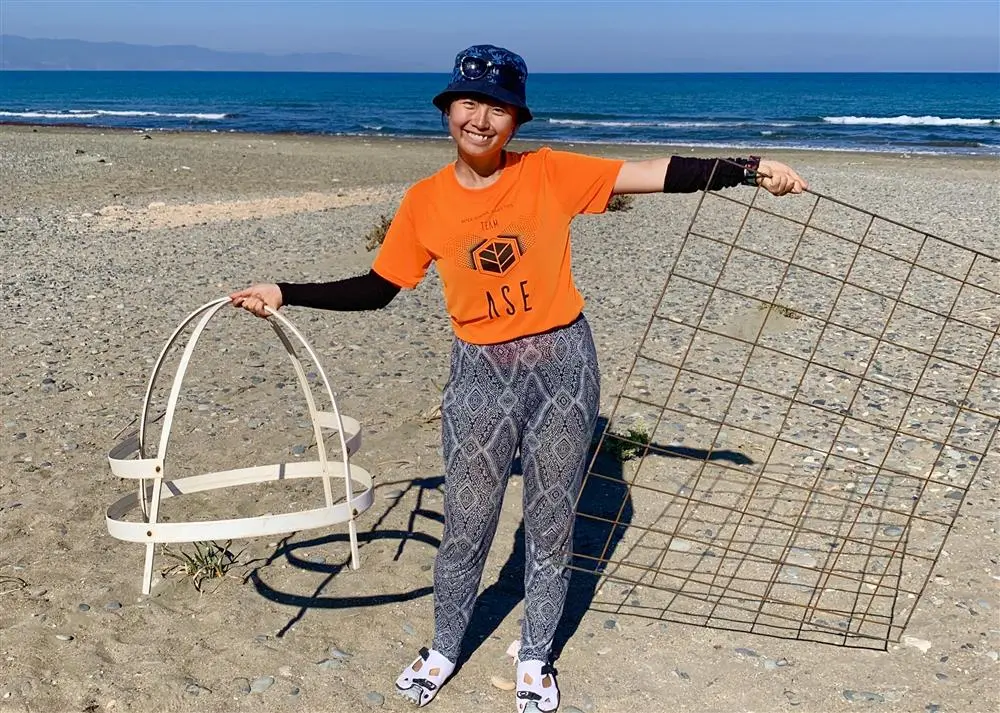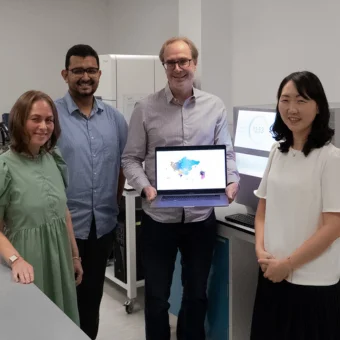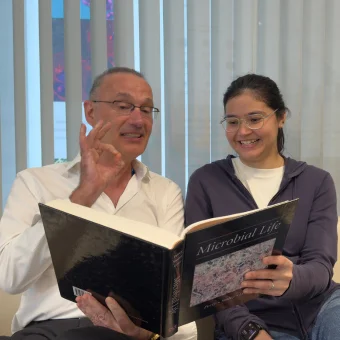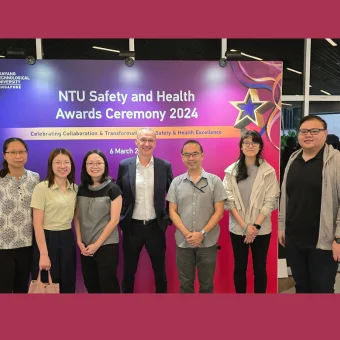Regine’s quest to save the hawksbill turtles
Having shared with The Straits Times on how she hopes to ensure the survivability of these sea turtles, Quorum gets up close & personal with Regine Tiong – a mission-driven SCELSE PhD student – to find out what inspired her to start this research.
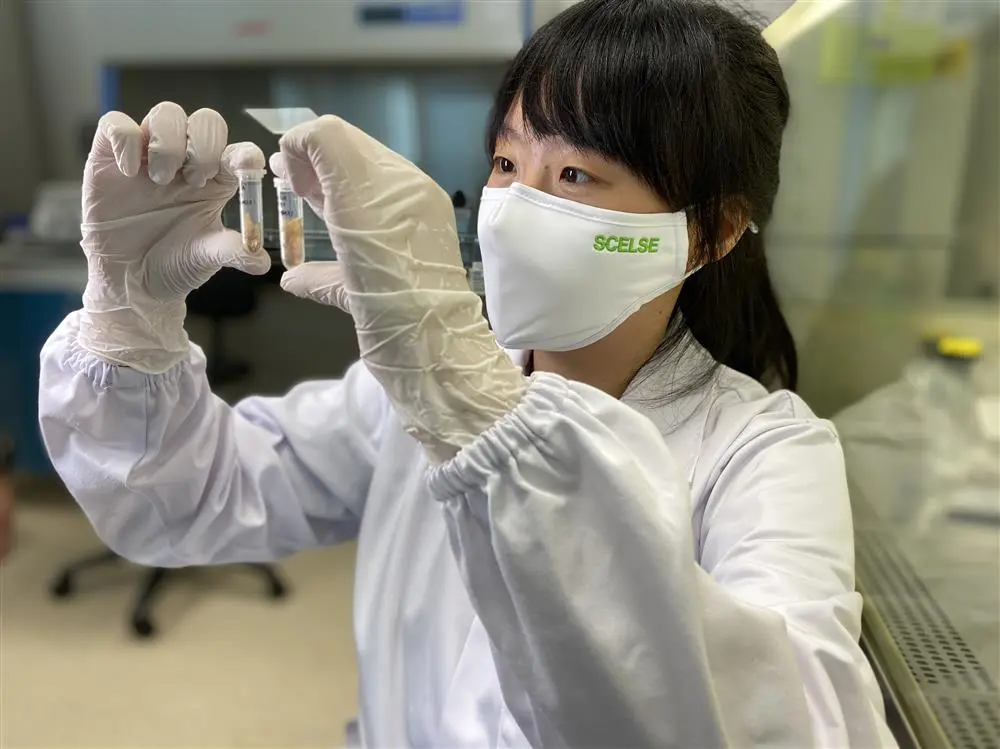
Regine observing samples of eggshells to be processed for DNA extraction and sequencing
- Featured
- 18 Jan 2022
1. How did you end up researching hawksbill turtles?
Growing up, I’ve always had an interest for all sorts of wildlife and especially for marine animals. I love how they gracefully move through the water.
In 2019, I applied for the Marine Science Research & Development Programme (MSRDP) award by the National Research Foundation (NRF). This award gave me the opportunity to work with The Society for the Protection of Turtles (SPOT), a conservation and research organisation, where I helped to keep track of nesting green and loggerhead turtles in northern Cyprus, and protected their nests for a month. This first-hand experience with sea turtles inspired my research with the hawksbill turtles in Singapore.
2. What is your most memorable experience in Cyprus?
Observing and monitoring this nesting green turtle making its arduous journey before laying her eggs at the break of dawn was unforgettable! She spent a few hours going around the dunes on the beach before nesting successfully. Her hardworking and determined nature, despite the fact that most of her offspring would not survive to adulthood, convinced me to contribute to the research and conservation of sea turtles.
3. Tell us more about your exciting expedition!
I had a wonderfully enriching one-month along the coasts in northern Cyprus with SPOT. Our work sites were multiple beaches along the northern Cyprus coast. The signature nesting beach is the Alagadi Turtle beach in Kyrenia. During the day, we would look for nests on the beaches by finding turtle tracks and providing nest protection against predators like wild dogs using wire grids.
Work was most exciting at night as we got to see the nesting mothers make their way up onto the beach and lay eggs. With minimal disturbance to their nesting process, we would tag them and collect measurements, as well as mark out their nests for protection after they make their way back to the ocean.
4. How did your journey lead you to SCELSE?
After my experience in northern Cyprus, I was motivated to study the hawksbill turtles in Singapore when I found out that NParks had only recently started to monitor the nestings of hawksbill turtles in Singapore.
With the help of Assistant Professor Kim Hie Lim and Senior Lecturer Shawn Lum from ASE, I was able to study the genetic diversity and population structure of nesting hawksbill turtles in Singapore as my final year project in ASE, in collaboration with NParks.
Then, I had the opportunity to continue and expand this study to a genomics level and produce the de novo whole genome assembly of the hawksbill turtle as a PhD student here at SCELSE. This PhD journey has been such a blessing to me and what better way than to contribute to wildlife in Singapore!
5. Personally, if I had my way as a scientist, I would …
… love to contribute to research and conservation of endangered wildlife through population genomics.
